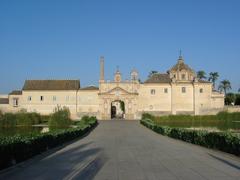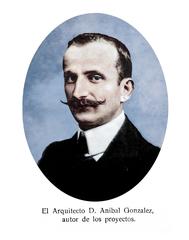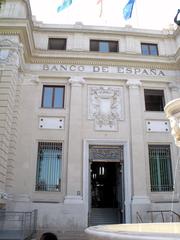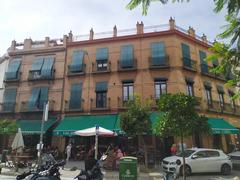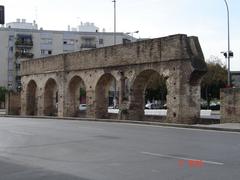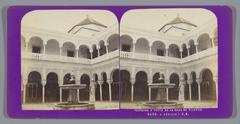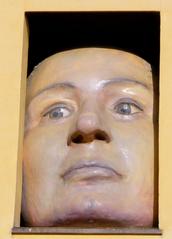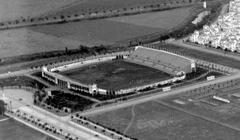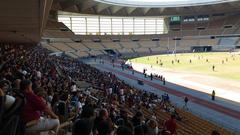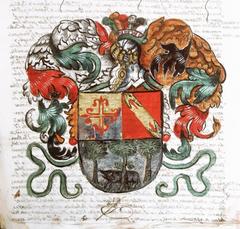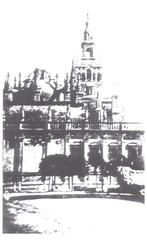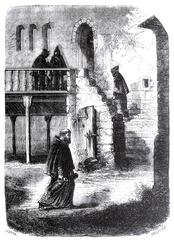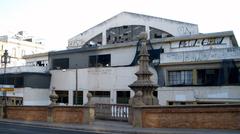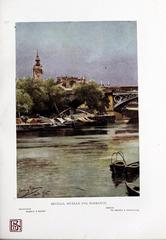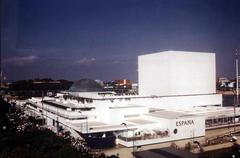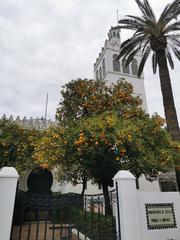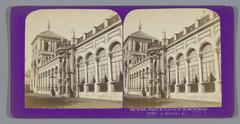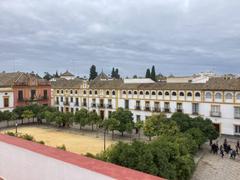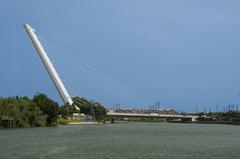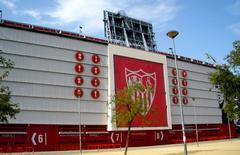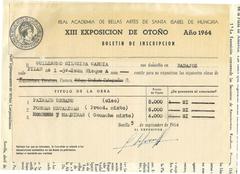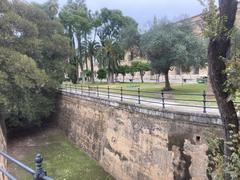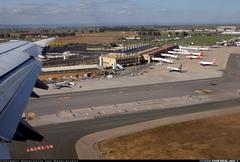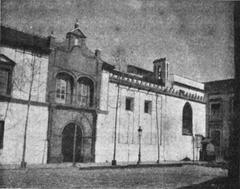Archaeological Museum of Seville: Visiting Hours, Tickets, and Travel Guide
Date: 04/07/2025
Introduction
The Archaeological Museum of Seville (Museo Arqueológico de Sevilla) stands as a cultural gem within María Luisa Park, offering an immersive journey through the millennia of Andalusia’s archaeological heritage. Established in 1879 and housed in the impressive Neo-Renaissance Pabellón del Renacimiento, the museum’s extensive collection spans from the Lower Paleolithic era to the Middle Ages, with particular emphasis on Roman, Tartessian, Visigothic, and Islamic artifacts. Among its most prized holdings is the Treasure of El Carambolo, a spectacular hoard of Iron Age gold jewelry that speaks to the region’s ancient wealth and cross-cultural connections.
This comprehensive guide provides up-to-date information on the museum’s history, visitor details, collection highlights, accessibility, and practical travel tips—ensuring you make the most of your time in Seville’s premier archaeological institution. For the latest on visiting hours, ticket prices, and special events, always consult official resources and tourism platforms.
(Spain.info, Turismo Sevilla, Seville Traveller, Introducing Seville)
Historical Background and Architectural Significance
Origins and Institutional Development
Founded by royal decree in 1879, the Archaeological Museum of Seville was originally located in the Convent of la Merced. Its holdings began with private collections, church properties, and significant finds from the nearby Roman city of Italica. The move to its present location in 1946 enabled the museum to expand both its exhibition space and its institutional scope, positioning it as a leading center for Andalusian archaeology.
(Wikipedia, Seville Traveller)
Architectural Significance: The Neo-Renaissance Pavilion
The museum resides in the Pabellón del Renacimiento, designed by Aníbal González for the 1929 Ibero-American Exposition. This Neo-Renaissance edifice features symmetrical forms, classical columns, and ornate stonework, standing as an exemplar of early 20th-century Spanish architecture. Located in the Plaza de América within María Luisa Park, the building is part of a harmonious ensemble alongside the Neo-Mudejar and Neo-Gothic museums, all set amid lush, landscaped gardens.
(Visitar Sevilla, Spain.info)
Visitor Information
Location and Getting There
- Address: Plaza de América, 51, 41013 Seville, Spain
- Setting: In María Luisa Park, easily reachable by public transport, taxi, or on foot from central Seville. Parking is limited; public transit is recommended.
- Nearby Attractions: Museum of Arts and Popular Customs, Plaza de España, and the Real Alcázar.
(Artsupp, Introducing Seville)
Current Status and Temporary Closures
As of 2025, the museum is temporarily closed for major renovations. Reopening is projected for 2027, with select exhibits available at the Convento de Santa Inés in the interim. Always confirm the museum’s status before your visit.
(Artsupp, seville-traveller.com)
Visiting Hours
- Winter (October–March): Tuesday–Saturday, 9:00 am–9:00 pm; Sundays and holidays, 9:00 am–3:00 pm
- Summer (April–September): Tuesday–Sunday, 9:00 am–3:00 pm
- Closed: Mondays and major holidays (January 1 and 6, May 1, December 24, 25, and 31)
- Note: Hours may differ during renovations or special events.
(WhichMuseum)
Tickets and Admission
- EU citizens: Free entry (with valid ID)
- Non-EU visitors: Nominal fee (typically €1.50–€3.00)
- Group visits/guided tours: May require advance booking and extra fees
- Ticketing: Usually purchased at the entrance; always check for updates and special offers.
(official Andalusian Museums Platform)
Accessibility
- Physical access: Ramps, elevators, and accessible restrooms (note: some facilities may be affected by renovations)
- Visitor amenities: Clean restrooms, cloakroom, gift shop, and available audio guides (primarily in Spanish, with some English options)
- Family-friendly: Interactive displays and educational materials for children and school groups.
(Artsupp)
Photography and Visitor Conduct
- Photography: Allowed without flash or tripods; some temporary exhibits may have restrictions
- Conduct: Visitors are asked not to touch exhibits and to supervise children
Collections and Exhibition Highlights
Chronological and Thematic Layout
The museum’s galleries are arranged to guide visitors through the history of Seville and greater Andalusia:
- Prehistory and Protohistory: Stone tools, ceramics, bronze and copper objects, and evidence of early metallurgical activity.
- Tartessian and Phoenician Cultures: Gold and silver jewelry, funerary items, and objects reflecting Mediterranean trade and cultural exchange.
- Roman Era (Italica): Marble statuary, mosaics, inscriptions, household goods, and architectural fragments from the Roman city of Italica. Notable pieces include statues of Emperors Trajan and Hadrian.
- Visigothic and Islamic Periods: Gold crosses, liturgical objects, ceramics, architectural elements, and coins illustrating the region’s religious and cultural diversity.
The Treasure of El Carambolo
The museum’s crown jewel, the Treasure of El Carambolo, dates to around 650 BCE and comprises 21 pieces of gold jewelry and ceremonial objects associated with the Tartessian or Phoenician elite. The treasure is displayed with accompanying ceramics and interpretive materials, offering a unique glimpse into Iron Age Iberia.
(Introducing Seville)
Temporary Exhibitions
Rotating exhibits highlight recent discoveries or explore specific themes, such as the “Treasure of Tomares” (a Roman coin hoard). These displays provide fresh perspectives and engage visitors in ongoing archaeological research.
(Turismo Sevilla)
Educational Programs and Special Events
- Guided tours: Offered regularly, primarily in Spanish; English options may be available with advance booking
- Workshops and activities: Tailored for families, school groups, and special interest audiences
- Virtual tours: Available on the museum’s website during renovations
Travel Tips
- Best times: Visit early or late in the day to avoid crowds
- Language: Most exhibit descriptions are in Spanish; consider an audio guide or guided tour if you prefer English narration
- Combine your visit: Plan to see nearby attractions in María Luisa Park, such as Plaza de España and the Museum of Popular Arts and Traditions
- Weather: The museum is air-conditioned—a welcome respite in Seville’s hot summers
- Getting there: Public transport or taxi is recommended due to limited parking
Frequently Asked Questions (FAQ)
Is the museum open every day?
No, it is closed on Mondays and major holidays. Check the official website for seasonal hours and temporary closures.
Do I need to buy tickets in advance?
Typically, tickets are available at the entrance; group tours and special events may require advance booking.
Is the museum accessible to people with disabilities?
Yes, with ramps, elevators, and accessible restrooms (some facilities may be affected during renovations).
Are guided tours available in English?
Occasionally; advance booking is advised.
Can I take photos inside?
Yes, without flash or tripods.
Visuals and Planning Resources
- Virtual tours and digital galleries: Explore the collection and architecture online
- Interactive maps: Downloadable guides to María Luisa Park and surrounding historical sites
- Official website and social media: Real-time updates on reopening, events, and exhibits
(Museos de Andalucía – Archaeological Museum of Seville)
Summary and Final Recommendations
The Archaeological Museum of Seville is a vital destination for anyone seeking to explore the deep history of Andalusia and the Mediterranean. Its collections—from the legendary Treasure of El Carambolo to Roman mosaics and Islamic ceramics—reveal the region’s remarkable story as a crossroads of civilizations. Although the museum is currently closed for renovations, its commitment to educational programming and public engagement continues through temporary exhibits and digital resources.
To plan an enriching visit, always check the latest information on opening hours and ticketing, utilize guided or audio tours, and combine your museum experience with exploration of the beautiful María Luisa Park and other nearby cultural landmarks. Stay informed about the reopening and special events via official platforms and the Audiala app, which offers interactive content and visitor tools.
Official Sources and Further Reading
- Spain.info – Archaeological Museum of Seville
- Turismo Sevilla – Archaeological Museum of Seville
- Artsupp – Archaeological Museum of Seville
- Seville City Guide – Archaeological Museum
- Wikipedia – Archeological Museum of Seville
- Introducing Seville – Archaeological Museum
